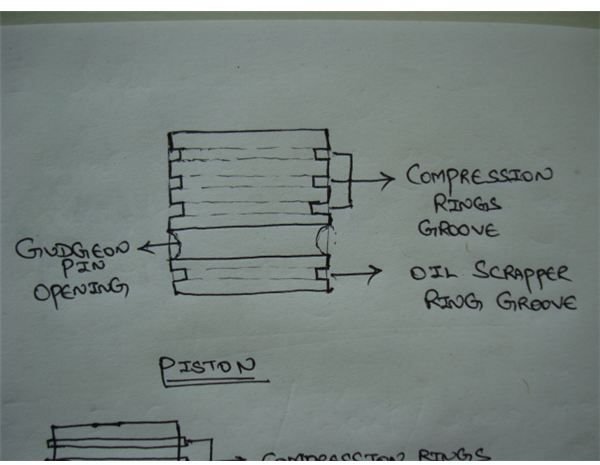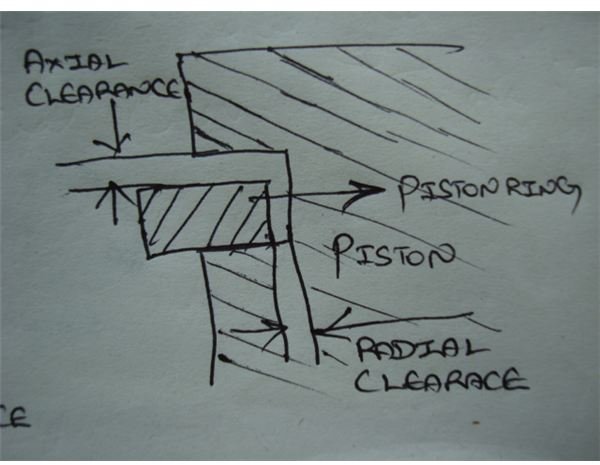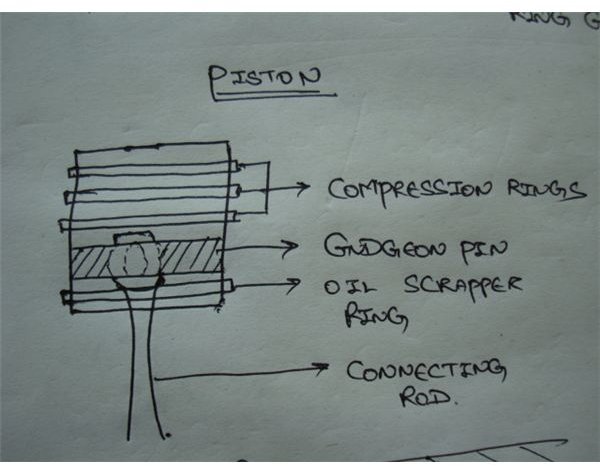Reciprocating Air Compressors Explained.
Introduction:
In the previous article, we have discussed about the cylinder head and valve arrangements in detail of reciprocating air compressors. Let us now discuss about other important parts like piston, liner, cooling arrangements, etc.
Piston:
Usually a reciprocating compressor’s piston is made up of light weight aluminum alloys. The important design criteria are that the weight of the piston must be as low as possible and also sufficiently strong enough to compress the hot air. It should also be of heat conducting material so as dissipate heat easily. The piston has number of grooves for piston rings which are fitted around piston for sealing and scrapping effects. The number of rings depends upon the pressure of compression and diameter of the piston. Also the different types of rings depend upon the type of lubrication. If the piston is splash lubricated, the piston will have an oil scrapper ring one or two in number. There are compressors where forced lubrication and cylinder lubrication types are used. When such types of lubrication system are adopted, care must be taken to prevent oil being carried over from the crank case. Thus two or more oil scrapper rings are used for scrapping the oil down towards the crankcase. The piston might be a normal type or it might also be of tandem type. A normal one is the type usually used for single-acting compressors. The tandem type of piston is used for double-acting compressors, where one side of the piston might be acting as first stage and the other side might be final stage or second stage. Other types of tandem pistons may be of the form where the piston might have a step connecting two different diameters, working on the compressing air on the same side of the piston. The diagram is enclosed for reference.

Some of the modern oil free compressors have no piston rings or wooden or ebonite piston rings where there is no lubrication or minimal lubrication is required. The piston usually has a set of compression rings and a single or set of oil scrapper rings. These rings fit in the piston grooves and have some clearance for sealing effect.
How Sealing Effect is obtained if the piston rings and grooves have clearance between them?
The concept of piston ring sealing is same as in diesel engines. It is known that the piston rings have a butt, where there is ample clearance to accommodate thermal expansion. There are also other types like axial and radial clearances. These clearance values are highly essential to have a proper sealing effect. The diagrams of the respective clearances have been illustrated below. The compressed air is allowed to seep through the clearance between the piston ring top land and the top of the piston groove (axial clearance), and thus gets beside the piston rings. This ensures that the air pressure is continuously available to act behind the piston rings thus enabling sealing effect. If there is no or more clearance, then the air compressor will not function properly. The effect is either breakage of piston rings or loss in compression pressure and thus delivery air output.


The piston reciprocates inside the cylinder liner, due to the transmission of motion from the crankshaft to the piston by the connecting rod. Thus the piston is connected to the connecting rod with the help of a pin called as “Wrist Pin” or the “Gudgeon Pin”. There is also a bearing provided between the gudgeon pin and the piston pin space. The bearing material is usually made of phosphor bronze and white metal alloy. The reason for having a bearing between the gudgeon pin and the piston connecting rod is due to the difference in motion between the piston and the connecting rod. It is evident and familiar that the motion of the piston is reciprocating. But it is unfamiliar that the motion of the connecting rod is articulating in nature. Thus if there is a bearing between the gudgeon pin and the connecting rod, there will be a smooth, even and safe transfer of motion between the two components.
In my next article, we will discuss about the cross-section of piston rings and other major components.
This post is part of the series: Reciprocating Air Compressor-Explained - 1
Read here to know about the detailed explanation of suction filter, cylinder heads, valves, casing, compressor crankshaft and bearings, lubrication system, bumping clearances, maintenance, unloading operation etc.
